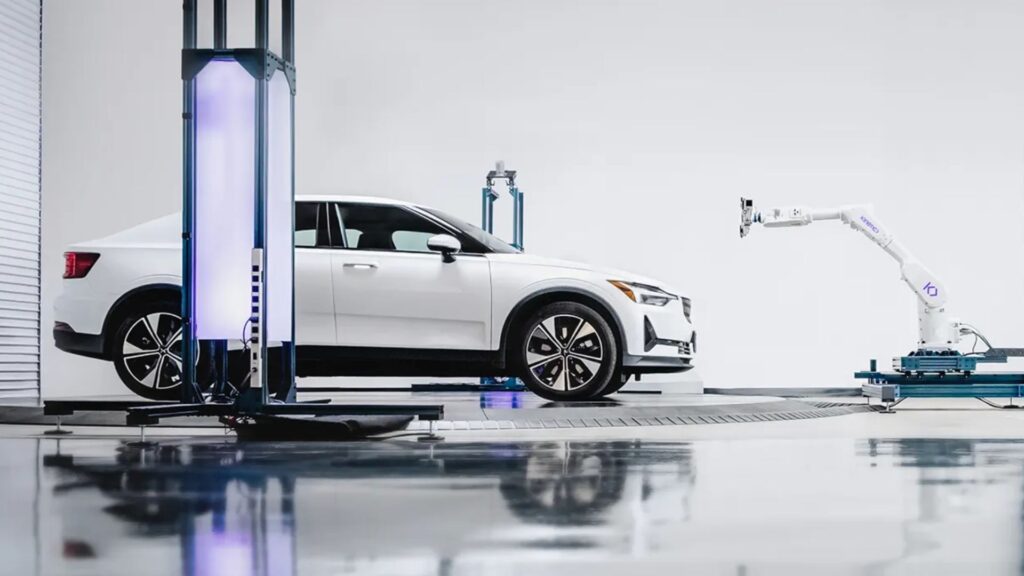A California-based startup, Kinetic Automation, is revolutionizing the electric vehicle (EV) repair landscape with a robotic system designed to quickly diagnose and recalibrate the intricate digital systems found in modern vehicles. This technological innovation comes at a pivotal time as 2024 has seen a cooling in EV sales largely attributed to rising repair costs. Kinetic Automation claims that a faster diagnosis can stimulate consumer interest in EVs, which are still perceived as a tempting yet complicated choice for many potential buyers.
Kinetic Automation’s system utilizes advanced computer vision and machine-learning algorithms to carry out diagnostics with remarkable efficiency. This process not only identifies issues quickly but also recalibrates the high-tech systems that modern vehicles depend on. The firm emphasizes the urgency and opportunity in repairing digitally complex vehicles, asserting that addressing these problems can enhance service capacity and generate increased revenue for businesses.
Concerns about the consumer market for EVs are underscored by a recent study from J.D. Power, which found that only 26% of U.S. consumers are inclined to consider purchasing an electric vehicle in the upcoming year. Concurrently, over 20% reported that they are highly unlikely to make such a purchase. Kinetic Automation positions itself as a critical player in the collision repair aftermarket, aiming to alleviate these consumer hesitations by offering digital repair solutions suitable for a variety of businesses, including national collision chains, dealerships, and fleet operators.
The Kinetic Hub can support up to 80 calibrations daily, with a remarkable turnaround time of under 60 minutes from drop-off to delivery. This operational efficiency allows collision repair businesses to accept more jobs without straining their existing staff or requiring additional equipment or space. When a vehicle arrives at one of Kinetic’s service bays, it is thoroughly scanned using machine vision sensors, including those mounted on a robotic arm to facilitate a comprehensive assessment. This preliminary scan helps determine which systems require recalibration or programming adjustments.
Kinetic’s software connects seamlessly to the vehicle’s systems to initiate and track the necessary fixes. Given that new vehicles feature a minimum of three sensor modules—many boasting 30 or more—there is a notable increase in complexity when it comes to repairs. New technologies such as camera systems, lidar, radar, and ultrasonic sensors have transformed vehicular architecture, making it essential for service providers to adapt quickly.
However, as innovations like Kinetic Automation’s robotic systems are embraced, challenges associated with automation do arise. Common problems include errors in the automation process, limitations due to API rate limits, and integration issues with existing systems.
For instance, errors in automation can occur when the programming logic is not aligned with the current operational state of the vehicle’s systems. This can typically be addressed by revisiting the code logic to ensure proper handling of each possible state of the vehicle. It is advisable to maintain a detailed log of errors to identify recurring issues, which can guide developers to refine algorithms effectively.
API rate limits represent another potential roadblock. If a service is queried too frequently, it can lead to throttling, which would prevent timely execution of necessary diagnostics and repairs. To mitigate this, businesses can implement a strategy that includes caching results to reduce the volume of API calls or batching requests to optimize performance within allowable limits.
Integration issues may arise when linking the robotic systems with existing digital platforms or software solutions. A thorough review of data mappings and workflows can identify discrepancies and gaps in integration. Continuous monitoring and feedback loops should be established to ensure systems remain synchronized, especially when updates or changes are implemented.
The risks of failing to address these automation errors swiftly can be significant, including lost revenue opportunities, increased repair times, and diminished consumer trust. The return on investment (ROI) for implementing quick error resolution strategies can be substantial. Businesses that prioritize rapid problem-solving can capitalize on increased customer satisfaction and retention while boosting operational throughput in an increasingly competitive market.
In conclusion, Kinetic Automation is providing a solution that not only addresses the urgent need for EV repairs but also tackles the broader issues of automation troubleshooting that businesses must face in a rapidly evolving technological landscape. The ability to quickly diagnose and rectify errors in automotive systems can yield significant benefits for repair operations and contribute to a renewed consumer interest in electric vehicles.
FlowMind AI Insight: Efficient error resolution in automotive automation systems is not just a technical necessity; it’s a strategic imperative. By investing in advanced diagnostics and proactive troubleshooting methodologies, companies can significantly enhance their service capacity and customer satisfaction, paving the way for sustained growth in a competitive market.
Original article: Read here
2024-06-21 07:00:00

